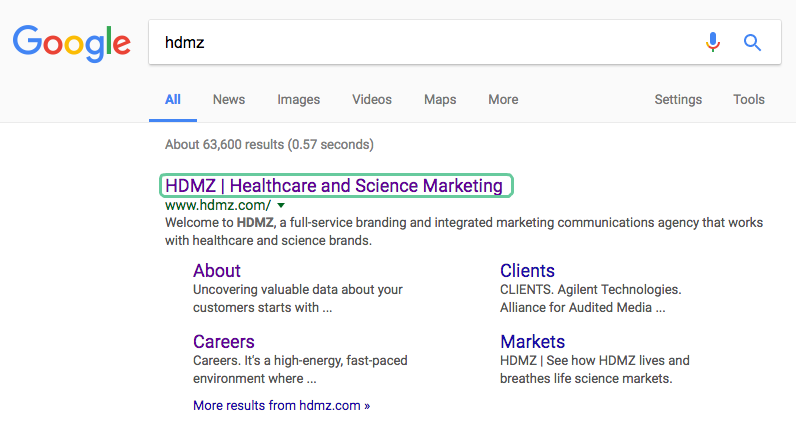What are title tags?
A title tag is displayed on search engine result pages (SERPs) as the clickable headline. Its purpose is to provide an accurate and concise description of a page’s content to the searcher.

Written correctly, title tags help search engines understand what your page is about and give searchers their first impression of your page. Title tags are used in three key places:
- Search engine results pages (SERPs)
Your title tag determines how your page title will display on SERPs and is the first impression a searcher has of your site. Even if your site ranks well, a good title tag can make or break whether a searcher decides to click on your site. Web browsers
Your title tag is displayed at the top of a web browser, used as placeholders for people who may have many tabs open. A unique and recognizable title helps make sure users don’t lose track of your page’s content.
Social networks
Some external websites, such as social networks will use your title tag to determine what to display when your page is shared.
Here is a screenshot from Twitter, for example:
Four key considerations when optimizing title tags:
- Give every page a unique title
Every page on your site needs a title tag, but make sure that every title tag is unique. A unique title helps visitors and search engines understand that each page’s content is different. Use a standard format, with the most important keywords first:
Page Name – Category | Company Name
Avoid using default titles, such as “Home”. Page titles should be unique, descriptive and concise. - Avoid keyword stuffing
Google doesn’t penalize for long titles, but keyword stuffing can make your results look spammy to Google and to users. For example, this title:
Immuno-oncology, immuno oncology, immunooncology | Company
Doesn’t help users and is a red flag for Google. - Watch title tag length
Search engines will truncate longer titles and add ellipses (“…”), so be descriptive but stay within a 55-60 character limit. - Think like your audience
While title tags are important to SEO, remember that your first job is to attract clicks. When creating title tags, think about the whole user experience, including keyword usage. Title tags are the first impression searchers have of your site.
Google has provided a helpful overview of best practices for title tags. For help optimizing your title tags and other aspects of on-page SEO, shoot us an email at client.services@hdmz.com.


